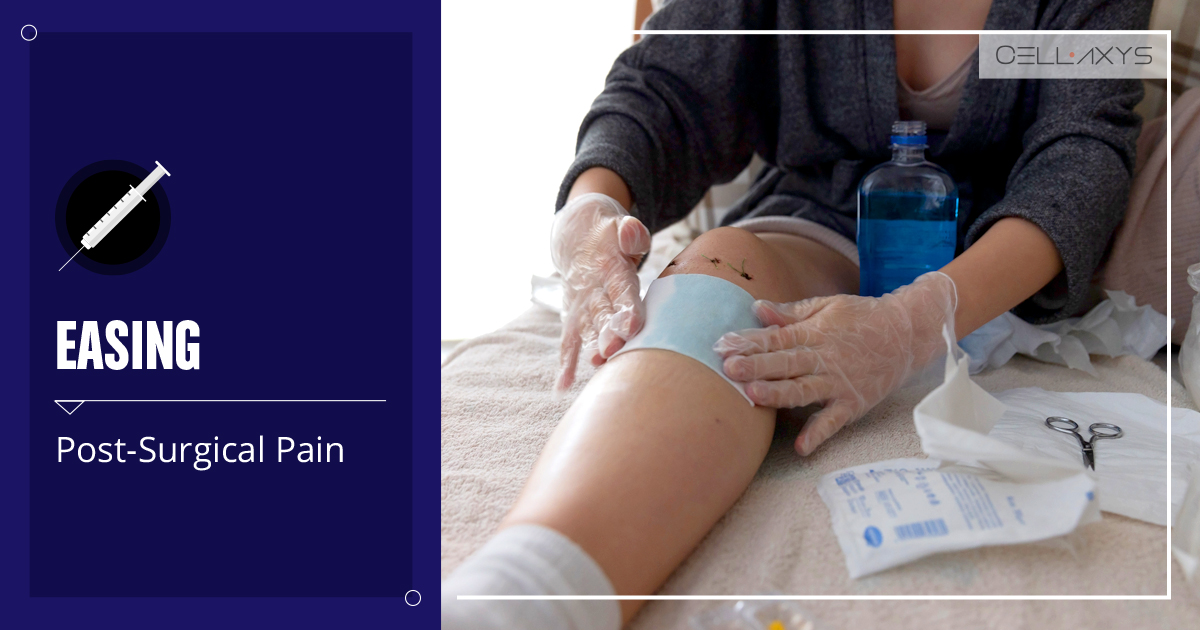Published on: January 31, 2020 | Updated on: March 12, 2024
In recent years, medical professionals have further embraced the notion that the body can fully heal itself. Between platelets, stem cells, and a host of other growth factors, the body has all the necessary tools to restore any damage it may suffer.
Though the raw materials needed to heal from an injury are present, they may be dormant or impotent if the injury is severe enough. This is where regenerative medicines such as platelet-rich plasma (PRP) therapy come in.
This idea of our bodies having all the necessary materials to reconstruct any injury is at the heart of regenerative medicine. Platelet-rich plasma therapy is a form of regenerative medicine that can harness those abilities and amplify the natural growth factors your body uses to heal tissue.
Do you have Platelet-Rich Plasma (PRP) Injections Recovery?
Fill out the form below to schedule your FREE virtual consultation
What Is Plasma and What Are Platelets?

Platelets, also called thrombocytes, are blood cells that cause blood clots and incite necessary growth healing functions. Platelet activation plays a key role in the body’s natural healing process.
What Is Platelet-Rich Plasma (PRP) and What Are PRP Injections?
Platelet-rich plasma injections use a concentration of a patient’s own platelets to accelerate the healing of injured tendons, ligaments, muscles, and joints.
These injections are an in-office procedure. The entire PRP procedure from start to finish takes about 45 minutes. During a PRP injection, a sample of blood is drawn from your arm. That blood is placed into a special canister and then it is placed into a centrifuge. The centrifuge separates the blood into various components.
A layer of platelets forms on the bottom when the tube is spun in the centrifuge. The layer of platelets and other larger cells (stem cells) are then removed from the rest of the blood. That concentrated layer containing the platelets is then injected into the joint, tendon, or ligament that is injured. An ultrasound machine might be used to guide the needle to its proper position, depending on the area being injected.
What Are the Uses for PRP Injections?
Researchers are trying out PRP injections for many different applications. Examples of these include:
- Meniscus tears: PRP when used alone will not heal a meniscus tear. However, when surgeons repair the meniscus using sutures, they will often inject PRP around the repair site. The current thinking is that PRP might have a role in improving the chance that the repaired meniscus will heal after suturing.
- Rotator cuff injuries: many people with bursitis or inflammation of their rotator cuff might respond to a PRP injection. PRP can reliably decrease inflammation which is the main goal of this treatment. These injections will not reliably heal a rotator cuff tear without surgery. Similar to a meniscus tear, doctors may inject PRP in the area after they repair the rotator cuff. In cases of bursitis without a tear, the PRP is often effective at alleviating the pain due to inflammation of the bursa.
- Osteoarthritis: one of the most common uses for PRP is to treat osteoarthritis of the knee, and less commonly of the shoulder and hip. PRP will not reverse or cure arthritis.
- Knee ligament injuries: PRP seems to be useful for injuries to the medial collateral ligament (MCL). Most MCL injuries heal on their own within 2-3 months. Some MCL injuries become chronic which means that the inflammation and swelling last well beyond the normal expected recovery time. PRP injections in this setting have been demonstrated to improve healing and minimize chronic inflammation.
- Hair loss: doctors have injected PRP into the scalp to promote hair growth and prevent hair loss. PRP injections are effective in treating androgenic alopecia, which is also known as male pattern baldness.
Note that patients will be asked to refrain from taking over-the-counter anti-inflammatory medications like aspirin or naproxen for a short period before the PRP procedure. This is because these medications interfere with platelet function and therefore the effectiveness of the treatment.
Why PRP and Not Cortisone?
Traditionally cortisone shots have been injected into patients for pain relief. Modern studies suggest that PRP injections are more effective than cortisone shots which simply mask inflammation and have no healing capabilities.
What Is the PRP Injection Recovery Time?
After getting PRP injections, you may experience some mild swelling or discomfort in the affected area – the same as you would for any other injection or shot.
You should be aware that because PRP injections are used to promote speedier healing and tissue growth, you will see more gradual results over the next couple of weeks as opposed to seeing an immediate change on the same day as the procedure.
Long-term, PRP injections are designed to alleviate pain by speeding up the healing process. The procedure aims to get you back to normal activities as well as being able to engage in physiotherapy quicker along with helping to treat and heal damaged tissues before the condition or injury worsens.
This is why PRP treatment may be advised for both chronic conditions like tendonitis or osteoarthritis as well as a way to help heal more acute injuries like shoulder fractures and rotator cuff tears.
Since the recovery time for PRP injections is so minimal and the procedure is so low risk, you may be recommended to have a course of several injections scheduled for around 2-3 weeks apart.
Post-PRP Injection Aftercare Instructions
With the varying applications for PRP injections, there are different instructions on how to handle each one.
Typical Post PRP Injection Instructions for Face and Hair
PRP therapy for dermatological issues like hair loss, anti-aging, or acne scar removal usually expects any post-procedure reaction to last for only a day or two. Here are some of the aftercare steps to follow for faster PRP injection recovery time:
- Calm the swelling by applying ice to the treated area.
- Keep your skin and scalp protected from direct sunshine.
- Do not use any chemical cleansers or makeup on your skin for at least a couple of days. If you’ve opted for micro-needling, the toxins can seep into your bloodstream and cause complications.
- Avoid swimming or steam and sauna baths that can expose the skin to hot temperatures.
- Your skin may feel dry and flaky. Nourish it with organic, chemical-free moisturizers as directed by your dermatologist.
- Expect to see results at 4-6 weeks after the session. If needed, your doctor will ask you to schedule follow-up sessions.
PRP Injection Aftercare for Joint Pain and Osteoarthritis
- Restrict strenuous activity for 24-48 hours after the injections.
- Use crutches, slings, braces, walking canes, and other aids to lower the stress on your joints and keep them immobile.
- Your doctor will likely recommend a progressive physical therapy program. In the initial few days, perform only light stretching and gentle movements.
- Over the next 3-4 weeks, as your joints start to recover, your physical trainer will increase the range of motion and perhaps, add strength training and other forms of exercise like using a treadmill or stationary bike.
- After 4 weeks, you can go back to performing weight training and running or jogging.
- You may be asked to ice the affected area for 10-20 minutes several times a day.
- Under the direction of your doctor, you can use warm packs for deep aches as long as they are not agitating.
What to Expect After PRP Injection for Ligaments and Tendon Damage
- You can move around to do light tasks around the house and work, however, doctors typically recommend that you rest the treated area for at least 2 weeks. You should avoid excessive activities that can strain the damaged ligament and interfere with the healing.
- For injections in the knee or heel, you may want to use crutches to keep the weight off while the ligament heals.
- Use braces or compression wraps to support the ligament.
- Your doctor will allow you to take acetaminophen (Tylenol), but the dosage is limited to 4,000 mg or less per day.
- Using ice and heat packs alternatively can also help with the healing and lower discomfort levels.
- You can expect that the ligament will start to heal about 2-6 weeks after the treatment. By week 12, you should see major improvements.
- Depending on the recovery and the condition of the ligament before treatment, your doctor might ask you to come in for follow-up injections to maintain the recovery.
Sources
Footnotes
- Pountos I, Panteli M, Walters G, Bush D, Giannoudis PV. Safety of epidural corticosteroid injections. Drugs in R&D. 2016;16:19-34.
- Grassi A, Napoli F, Romandini I, Samuelsson K, Zaffagnini S, Candrian C, Filardo G. Is platelet-rich plasma (PRP) effective in the treatment of acute muscle injuries? A systematic review and meta-analysis. Sports Medicine. 2018;48:971-89.
- Marques LF, Stessuk T, Camargo IC, Sabeh Junior N, Santos LD, Ribeiro-Paes JT. Platelet-rich plasma (PRP): methodological aspects and clinical applications. Platelets. 2015;26(2):101-13.
- Jang SJ, Kim JD, Cha SS. Platelet-rich plasma (PRP) injections as an effective treatment for early osteoarthritis. European journal of orthopaedic surgery & traumatology. 2013;23:573-80.
- Wasterlain AS, Braun HJ, Harris AH, Kim HJ, Dragoo JL. The systemic effects of platelet-rich plasma injection. The American journal of sports medicine. 2013;41(1):186-93.
References
- The Science Behind Separating Blood and Platelets. OneBlood. Accessed 2/25/2024.
- Platelet-Rich Plasma (PRP) Treatment. Washington University Orthopedics. Accessed 2/25/2024.
- Platelet-Rich Plasma (PRP) Injections. Johns Hopkins Medicine. Accessed 2/25/2024.
- What Is PRP?. Healthline. Accessed 2/25/2024.
- Male Pattern Baldness. Healthline. Accessed 2/25/2024.
CELLAXYS does not offer Stem Cell Therapy as a cure for any medical condition. No statements or treatments presented by Cellaxys have been evaluated or approved by the Food and Drug Administration (FDA). This site contains no medical advice. All statements and opinions are provided for educational and informational purposes only.
Dr Pejman Bady
Author
Dr. Pejman Bady began his career over 20 years ago in Family/Emergency Medicine, working in fast-paced emergency departments in Nevada and Kansas. He has served the people of Las Vegas as a physician for over two decades. Throughout this time, he has been met with much acclaim and is now the head of Emergency Medical Services in Nye County, Nevada. More about the doctor on this page.
Dr Pouya Mohajer
Contributor
Pouya Mohajer, M.D. is the Director of Spine and Interventional Medicine for CELLAXYS: Age, Regenerative, and Interventional Medicine Centers. He has over 20 years of experience in pain management, perioperative medicine, and anesthesiology. Dr. Mohajer founded and is the Medical Director of Southern Nevada Pain Specialists and PRIMMED Clinics. He has dedicated his career to surgical innovation and scientific advancement. More about the doctor on this page.









